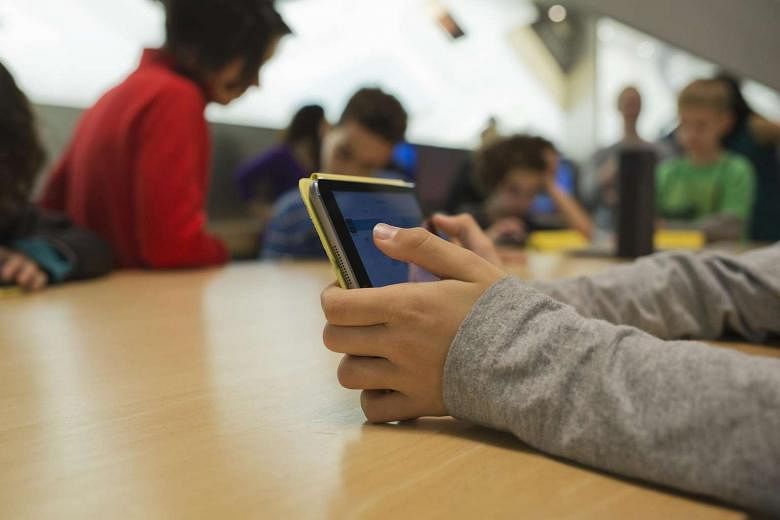SINGAPORE - My six-year-old daughter Ollie asked me for a mobile phone last month (December 2015). I was thinking: "Isn't this a bit too early?" But these days, it is common to see children carrying their own mobile device.
I'm not liberal enough to give her a phone in the next two years at least. But I have thought about the ground rules to set should my husband and I one day decide to relax Ollie's device access.
Currently, I do not even allow any iPad or computer time at home. And the only shows she watches are vetted content in DVDs. Access to the Disney Channel, which I subscribe to, is limited to public holidays. My rationale? It is easier to switch off the TV once the DVD show ends. But there is no end to Disney Channel broadcasts.
While discipline is my main motivation now for limiting gadget access, I'm also wary of sinister motives - bullying, cheating scams and sexual predation - lurking behind every unsupervised Web screen.
The Straits Times reported late last year (2015), citing a poll of 2,500 upper primary and secondary school children, that a third of the older students and a tenth of the younger ones had met someone they had first encountered online in the past year.
About a third of the students who had these meet-ups rated the encounters as slightly or very unpleasant. The survey was done by voluntary welfare group Touch Cyber Wellness from January to May this year.
It is also not surprising that Facebook was named by the children and teens as the top platform through which they got to know the people they eventually met.
As much as I would like to keep Ollie away from the Internet, I feel the better approach would be to learn how to use the parental controls that come with most computers and mobile devices.
Here's a quick guide on how to limit your child's exposure to apps and the Internet:
1. Set a passcode
On Apple devices, for instance, you can set a passcode to prevent access to certain apps such as Facetime, or to disallow in-app purchases or the downloading of Facebook. A master passcode can be created to prevent children from turning off parental restrictions. Open Settings >General >Restrictions >Enable Restrictions, enter a passcode twice, and choose the apps and operations you want to restrict.
2. Spy on browser history
Some Web browsers like Safari automatically record site visit history, which can be viewed. If someone has cleared their history, you can still view history via Settings >Safari >Advanced >Website Data. If you want to block access to the Web browser altogether, you can set a password to prevent accidental access via Settings >Safari.
3. Share location
The location of each family member can be shared with the rest of the family automatically when a Family Sharing account is set up in iCloud.You can use Find My Friends or the Messages app to keep tabs on each other. In exchange for having a phone, parents can set the condition that there will be no turning off the the location sharing function for tracking their children's exact location.
4. Send a copy of every outgoing message
A feature in Family Sharing allows you to forward any text messages your children send to your device, allowing for some peace of mind.


